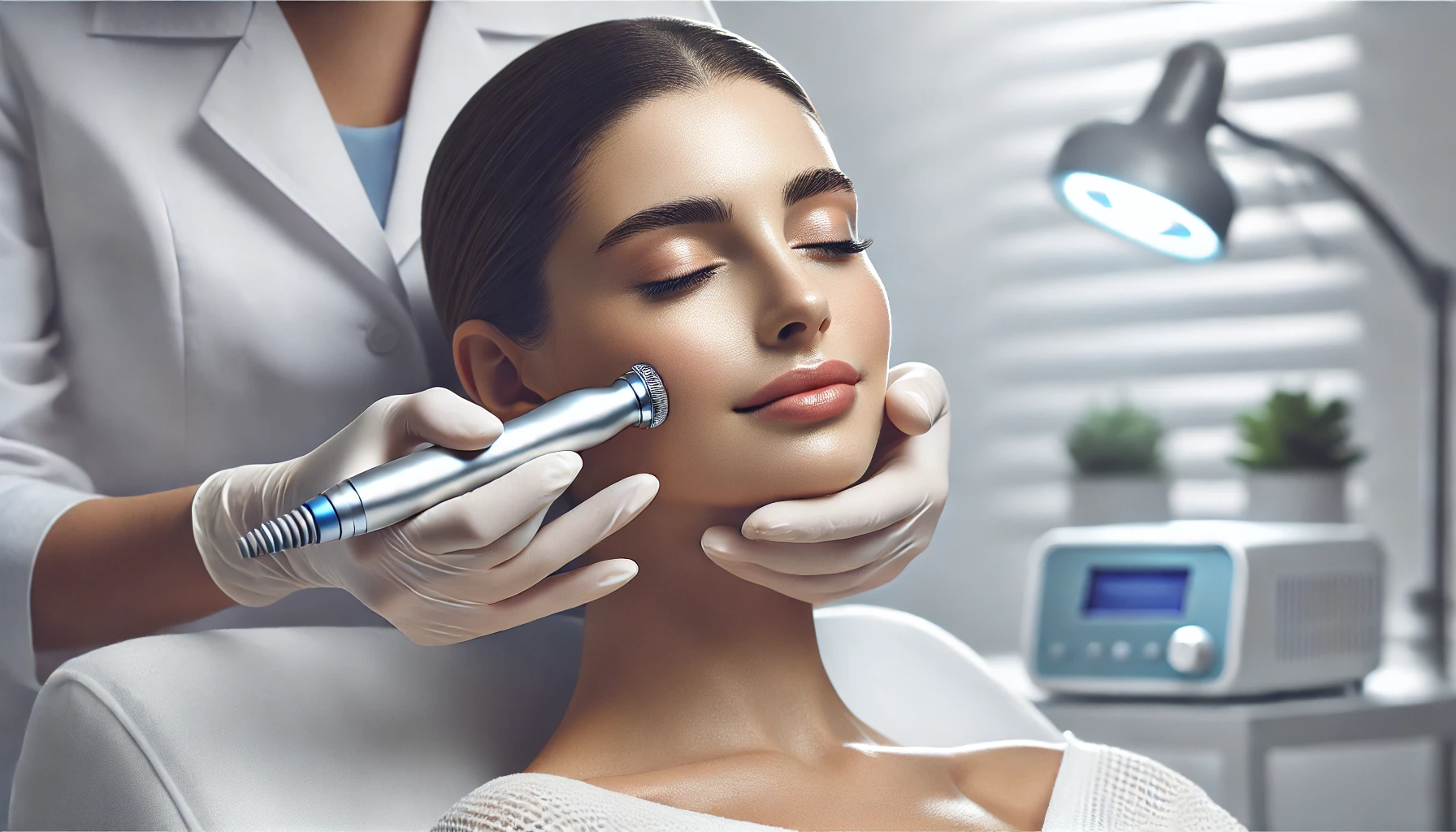Dermabrasion — sometimes referred to as “skin sanding” — is a surgical skincare procedure used to smooth and resurface the skin. It’s most commonly performed on patients with:
- Acne scars
- Trauma marks
- Chickenpox or smallpox scars
- Freckles
- Tattoo removal needs
This technique involves removing the outer layers of the epidermis and dermis, encouraging new, healthier skin to grow in its place.
What Is Dermabrasion and How Does It Work?
Dermabrasion is a mechanical or manual resurfacing procedure. It can be done using:
- Coarse abrasive paper (manual method)
- A rotating wire brush or diamond wheel (mechanical device)
The treatment removes damaged surface layers of skin to improve overall texture, tone, and appearance — especially on the face, which responds best due to its higher concentration of epithelial tissue.
Before the Procedure: Patient Prep & Expectations
Dermabrasion is considered aesthetic surgery, so patients need to be informed and prepared.
Before treatment, the surgeon will explain the risks, healing process, and realistic outcomes. The extent of the treated area determines whether the procedure takes place in:
- A doctor’s office
- An outpatient clinic
- A hospital (if large areas require general anesthesia)
🧴 Pre-op care includes:
- Cleaning the skin for several days before surgery
- Men may be asked to shave the morning of surgery
- Anesthetic spray and topical vasoconstrictors may be used to reduce bleeding
- General anesthesia is common in extensive cases
Once anesthetized, the outer layers of skin are removed, and the area is irrigated with saline solution to clean debris.
Is Dermabrasion for Everyone?
While dermabrasion is effective for many, not every skin type or condition is suitable for this procedure. Several factors must be considered before deciding to undergo dermabrasion.
1. Skin Tone Considerations
People with darker skin tones are at higher risk for permanent discoloration or post-procedure hyperpigmentation. In such cases, other treatment options may be safer and more effective.
2. Sensitive Skin Types
If your skin is easily irritated or reacts strongly to skincare products or treatments, dermabrasion may not be ideal. Sensitive skin may develop:
- Allergic reactions
- Prolonged redness
- Inflammation or scarring
3. Active Acne or Open Skin
Patients with active acne should avoid dermabrasion until breakouts are healed. Treating inflamed or broken skin can:
- Cause infections
- Lead to scarring
- Delay healing significantly
This also applies to people recovering from:
- Burns
- Chemical peels
- Other resurfacing procedures
4. Risk of Keloids
Some individuals are prone to keloids — raised, thickened scars that develop after injury.
If your skin tends to form excessive scar tissue, dermabrasion may trigger similar overgrowth, making it a risky option.
5. Who Should Perform Dermabrasion?
This is a surgical procedure, and should only be performed by licensed physicians or plastic surgeons.
⚠️ Beware of unlicensed providers offering “dermabrasion” — they may be performing microdermabrasion, which is a far more superficial treatment and does not require anesthesia.
Microdermabrasion can be done by trained estheticians, but dermabrasion is a medical procedure, requiring experience and clinical safety protocols.
Weighing the Benefits and Risks
Just like any other cosmetic or medical treatment, dermabrasion isn’t for everyone.
It can deliver amazing results for certain types of scars or pigmentation issues, but it also involves:
- Downtime
- Post-op care
- Temporary discomfort
- Risks of infection or discoloration
That’s why consulting a qualified professional and assessing your individual skin condition is critical before moving forward.
Final Thoughts
Dermabrasion can dramatically improve your skin’s appearance — but only if you’re the right candidate, and the procedure is done by a skilled, licensed practitioner.
Always remember: it’s not just your money on the line — it’s your skin.
When in doubt, consult a board-certified dermatologist or plastic surgeon who can guide you toward the safest and most effective treatment for your specific skin goals.
